Coastal marine ecosystems are renowned for their elevated primary productivity, largely fueled by macroalgae. The key compounds in macroalgal structures are polysaccharides, which also function as carbon storage. Alginate, the primary component of the cell wall in brown algae, undergoes remineralization facilitated by specific heterotrophic microbial communities linked to the algae. Among these communities, primary degraders play a crucial role in utilizing alginate as a carbon source, breaking it down into oligosaccharides or monosaccharides with alginate lyases, often found in alginate utilization loci (AUL). This intricate system encompasses essential proteins for the transport, catabolism, and assimilation of alginate degradation products into the cytoplasm. This study aims to characterize the substrate niche and metabolic interactions of bacteria associated with the brown alga Ascophyllum nodosum, identifying primary degraders and secondary consumers for alginate. Seventeen bacterial strains isolated from a single population of A. nodosum in Roscoff were used for genomic analysis to highlight key alginate utilization enzymes. Catabolic profiles tested metabolic capabilities in alginate utilization, demonstrating that primary degraders can degrade gel and/or soluble alginate and grow. CAZyme annotations revealed genomic capacity to degrade alginate in some strains. Co-culture experiments characterized possible interactions between strains with different growth behavior.
promotor/supervisor feedback
nothing yet




